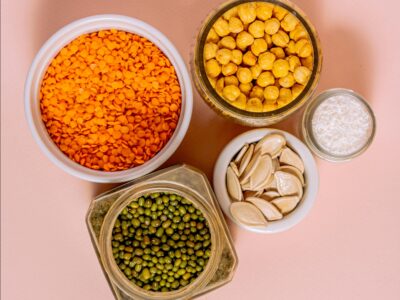Why having a balanced diet is helping in the battle with diabetes
In most areas of life, I like to think I take a laid-back, pragmatic view. But, when it comes to food, that goes out the window. I am obsessed. I am a snob. From breakfast to dinner, New Year to Christmas, my diary is mapped out by what I will be eating, when I will be eating it, and with whom. Family holidays are as much about paellas and gelato as they are ancient ruins, art galleries and fun in the sun!
I am not the only one it seems. Turn on the television and the chances are that an episode of Bake Off, MasterChef or The Great British Menu will appear.
For me, buying local and seasonal produce is a factor in what I eat. If I can say I have met the farmer who grew my salad leaves or milked the herd of cows, so much the better. Living in Wales, we have many local food producers who exhibit at fairs and farmers markets. Cheese, honey, pies and locally ground coffee – we have them all and our eggs come from a friend during the laying season.
But I have also come to appreciate that the balance of my diet is important too –
Why? Because having a balanced diet can help us to keep our eyes healthy and influence whether we develop other diseases that affect our vision.
Take diabetes as an example. The World Health Organization reports that the number of people with diabetes has risen from 108 million in 1980 to 422 million in 2014, and it acknowledges that diabetes is a major cause of blindness.
The charity Diabetes UK estimates that sadly 1,600 people lose their sight every year. They are likely to have developed diabetic retinopathy – this is an eye disease that people living with diabetes are more at risk of getting. As the charity explains, if our blood sugar levels and blood pressure are consistently high, we can seriously damage our blood vessels including the ones in our eyes.
Worryingly, it is believed that many people with diabetes are undiagnosed and are therefore not receiving the treatment they need. But optometry can help with diagnosising patients too. Using clever tools, a sight test by an optometrist can detect signs of underlying health conditions, including diabetes.
I am now that annoying person that bugs family and friends about their diet and when they last saw their local optometrist for a sight test. But I think it is a price worth paying to look after our sight.
6 tips to reduce your chances of developing type 2 diabetes by altering your diet
With thanks to Diabetes UK and the AOP.
1. Choose drinks without added sugar
We know there is a link between having full sugar fizzy and energy drinks, and an increased risk of type 2 diabetes. Cutting down on these can help to reduce your risk and support keeping your weight down. If you are finding it hard to cut down, look out for diet or low calorie versions of soft drinks and check there’s no added sugar.
Try not to replace sugary drinks with fruit juices or smoothies as these still contain a high amount of free sugar. Try plain water, plain milk, tea or coffee without added sugar, as replacements. Evidence also shows that drinking unsweetened tea and coffee is associated with a reduced risk.
2. Choose higher fibre carbs
Eating white bread, white rice, sugary breakfast cereals or other simple starchy foods, known as refined carbs, are linked with an increased risk of type 2 diabetes. But wholegrains such as brown rice, wholewheat pasta, wholemeal flour, wholegrain bread and oats and linked to a reduced risk so choose these instead.
When you’re out shopping remember to check food labels to see if a food is high fibre. Compare different foods to find the ones with the most fibre in them.
Other healthy sources of carbs include:
- fruit and vegetables
- pulses such has chickpeas, beans and lentils
- dairy like unsweetened yoghurt and milk.
Having more fibre is also associated with lower risk of other serious conditions such as obesity, heart diseases and certain types of cancers. It’s also important to think about your carbohydrate portion sizes.
3. Cut down on red and processed meat
Having more red and processed meats like bacon, ham, sausages, pork, beef and lamb are all associated with an increased risk of type 2 diabetes. They also have links to heart problems and certain types of cancer.
Try to get your protein from healthier foods like:
- pulses such as beans and lentils
- eggs
- fish
- chicken and turkey
- unsalted nuts.
Fish is really good for us and oily fish like salmon and mackerel are rich in omega-3 oil which helps protect your heart. Try to have at least one portion of oily fish each week and one portion of white fish.
4. Eat plenty of fruit and veg
Including more fruit and vegetables in your diet is linked with a reduced risk of type 2 diabetes. But did you know there are also certain types of fruit and veg that have been specifically associated with a reduced risk?
These are:
- apples
- grapes
- berries
- green leafy veg such as spinach, kale, watercress, rocket.
It doesn’t matter whether they are fresh or frozen, try to find ways to include these in your diet. Try having them as snacks or an extra portion of veg with your meals.
It can be confusing to know whether you should eat certain types of fruit, because they contain sugar. The good news is the natural sugar in whole fruit is not the type of added (or free) sugar we need to cut down on. But drinks like fruit juices and smoothies do contain free sugar, so eat the whole fruit and veg instead.
|
5. Include healthier fats in your diet It’s important to have some healthy fat in our diets because it gives us energy. The type of fat we choose can affect our health. Some saturated fats can increase the amount of cholesterol in your blood, increasing your risk of heart problems. These are mainly found in animal products and prepared food like:
Coconut and palm oil can also affect our cholesterol levels. If you are at risk of type 2 diabetes, you are likely to be at an increased risk of heart problems so try to reduce these foods. Healthier fats are found in foods like:
We also know that the type of fat found in oily fish like salmon and mackerel is linked with a reduced risk, especially if you are from a South Asian background. |
6. Cut down on salt
Eating lots of salt can increase your risk of high blood pressure, which can lead to an increased risk of heart disease and stroke. Having high blood pressure has also been linked to an increased risk of type 2 diabetes.
Try to limit yourself to a maximum of one teaspoonful (6g) of salt a day. Lots of pre-packaged foods like bacon, sausages, crisps and ready meals already contain salt. So remember to check food labels and choose those with less salt in them.
Cooking from scratch will help you keep an eye on how much salt you’re eating. Instead of adding extra salt to your food try out different herbs and spices to add in extra flavour.







